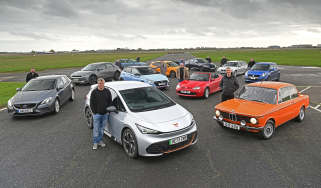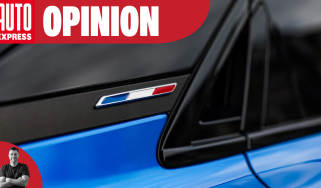Best Porsche cars ever: Porsche 911 GT3 RS
A quick blast up the hill reinforces why the Porsche 911 GT3 RS represents what Porsche engineers do best
| Key specs | |
| Engine | 6cyl boxer |
| Capacity | 4.0 litres |
| Power | 525bhp |
| Top speed | 184mph |
Porsche 911's have always been capable track cars, but for those bent on having the best version around a circuit, the GT3 RS is the answer. In its current 992-based guise, there’s a feeling that Porsche hasn’t simply evolved things from the car’s predecessor – it’s taken an evolutionary leap.
Powering the GT3 RS is a 4.0-litre naturally aspirated flat-six engine boasting 525bhp. This isn’t the highest output in the 911 line-up – that accolade is reserved for the Turbo S – yet this car isn’t just about power, but poise and agility, too. Typically, the GT department has been ruthless in saving weight, dropping mass wherever possible. This is why it has unique carbon-fibre bodywork, which usefully also helps manage the airflow around the car.
Indeed, the way the 911 GT3 RS looks is entirely dictated by its need to exploit the air that travels, over, under and through it. Those roof vanes? They are there to prevent hot air from the front-mounted radiator getting into the engine intake. The upright blades behind the front wheels? There to smooth the airflow down the car’s flanks. Every element of the GT3 RS has a purpose – to make it the fastest, most capable machine around your chosen circuit.
It’s not only first principles of lighter weight, improved aerodynamics and more power that Porsche has applied, either, because the 911 GT3 RS introduces a new technical arsenal that allows the driver/owner to become their own race engineer. No toolkit is required, because all the adjustments to the chassis, drivetrain, differential and more can be adjusted by four knobs on the steering wheel. By pushing and twisting, you can configure things such as the compression and rebound settings on the front and rear dampers, pick a variety of modes for the traction and stability control, and even adjust the electronic-diff settings, be it on power or overrun.
In accelerative terms the GT3 RS doesn’t feel particularly wild; a 911 Turbo S will leave it standing. But once you reach a corner, this car makes its advantage clear. It’s able to turn in and carry pace through bends at speeds that will leave your neck straining in protest. That’s not possible on the hill at Goodwood because, if I’m being honest, I’m not prepared to push it here. I’ve done so previously at Silverstone, and I know what the GT3 RS is capable of. Conscious that nobody really remembers the fast runs but always remembers the crashes, I’ll leave the wild runs up the hill in this incredible machine to those better qualified. People such as Jörg Bergmeister, the affable racer who was instrumental in developing the car, and admits that it’s as close to a racing machine for the road as is possible.
There’s no denying it – and, more than that, the RS is significant because while Porsche makes money selling SUVs, at its core, it’s a brand run by enthusiasts, building cars that other companies have all but given up on. Its relentless sporting pursuit to produce engaging driver’s machinery is no better represented than here, in the GT3 RS.


